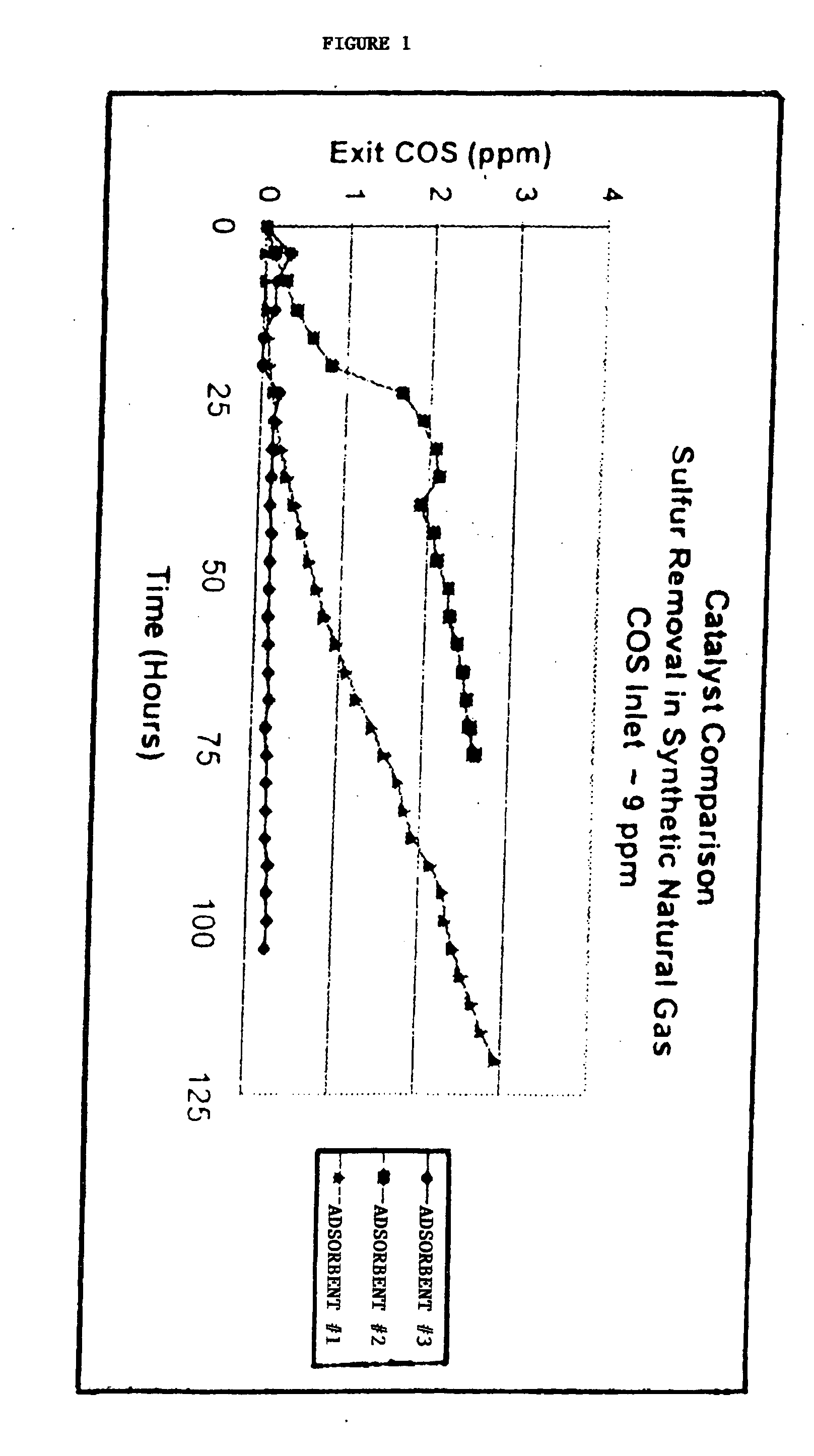Sulfur adsorbent, desulfurization system and method for desulfurizing
a desulfurization system and desulfurization technology, applied in physical/chemical process catalysts, metal/metal-oxide/metal-hydroxide catalysts, other chemical processes, etc., can solve the problems of shortening the life expectancy of fuel cell components, and affecting the efficiency of desulfurization systems
- Summary
- Abstract
- Description
- Claims
- Application Information
AI Technical Summary
Benefits of technology
Problems solved by technology
Method used
Image
Examples
examples
[0074] The following example is intended to be illustrative to teach one of ordinary skill in the art to use this composition. This example is not intended to limit the invention in any way.
[0075] In order to illustrate one embodiment of the composition of the invention, the inventors have compared the performance of three sulfur adsorbents: 1) an adsorbent comprising hydrated alumina impregnated with copper oxide, wherein the copper oxide comprises 18% of the composition and the hydrated alumina comprises 82% (Adsorbent #1); 2) an adsorbent comprising copper oxide, zinc oxide and amorphousaluminum, (Adsorbent #2) wherein the copper oxide comprises 59%, the zinc oxide comprises 28% and the alumina comprises 14% of the adsorbent; and 3) the inventive adsorbent comprising 70% crystalline hydrated alumina and 30% of adsorbent 2. (Adsorbent #3) The hydrated alumina of Adsorbent #1 and Adsorbent #3 is comprised of crystalline boehmite.
[0076] The volume of the adsorbents used in the tes...
PUM
| Property | Measurement | Unit |
|---|---|---|
| Temperature | aaaaa | aaaaa |
| Temperature | aaaaa | aaaaa |
| Fraction | aaaaa | aaaaa |
Abstract
Description
Claims
Application Information
 Login to View More
Login to View More - R&D
- Intellectual Property
- Life Sciences
- Materials
- Tech Scout
- Unparalleled Data Quality
- Higher Quality Content
- 60% Fewer Hallucinations
Browse by: Latest US Patents, China's latest patents, Technical Efficacy Thesaurus, Application Domain, Technology Topic, Popular Technical Reports.
© 2025 PatSnap. All rights reserved.Legal|Privacy policy|Modern Slavery Act Transparency Statement|Sitemap|About US| Contact US: help@patsnap.com

